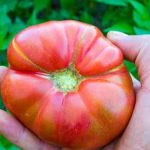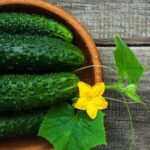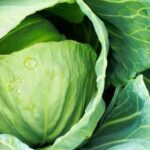Central Florida boasts a unique and favorable climate for vegetable gardening, making it an ideal location for green thumbs to cultivate their own fresh produce. With its subtropical climate, abundant sunshine, and ample rainfall, the region offers an extended growing season and a wide variety of vegetables that can thrive in its specific conditions.
Whether you are a seasoned gardener or just starting out, this Central Florida Vegetable Gardening Guide will provide you with valuable information and tips to ensure a successful harvest.
In this guide, we will delve into the different seasons and planting schedules specific to Central Florida. Understanding the optimal times for planting various vegetables is crucial for maximizing your garden’s productivity. We will also explore how to select the perfect vegetable varieties that are best suited for Central Florida’s climate. With so many options available, knowing which vegetables are most likely to thrive in the region is key to achieving a bountiful yield.
To ensure healthy plant growth, we cannot overlook the importance of preparing your garden bed properly. The guide will provide insights into soil amendments and fertilization tips specifically tailored to Central Florida’s distinct soil conditions. Additionally, we will discuss the essential tools and equipment needed for successful vegetable gardening in this area.
The upcoming sections of this guide will cover topics such as watering techniques, pest and disease prevention, harvesting and storing your crops, as well as connecting with local gardening communities and resources within Central Florida. By following the advice outlined in this article series, you will be well-equipped to embrace the joy and reap the benefits of vegetable gardening in Central Florida.
Understanding the Different Seasons and Planting Schedules in Central Florida
Understand the cycles of Central Florida’s seasons to maximize your vegetable gardening success. Central Florida experiences two main growing seasons: the warm season and the cool season. These seasons are characterized by specific temperature and humidity patterns that influence which vegetables thrive during each period. By familiarizing yourself with the planting schedules for these seasons, you can ensure that your garden is always productive.
The Warm Season
Central Florida’s warm season typically spans from March to September, with peak temperatures occurring between June and August. During this time, vegetables that prefer warmer weather thrive, such as tomatoes, peppers, okra, and beans. It is recommended to start planting warm-season vegetables in March or April when the average temperature remains consistently above 65°F (18°C).
To extend the growing season of warm-season vegetables, consider using shade cloth or providing afternoon shade through strategic placement or trellising. This can help protect plants from excessive heat and sun exposure during the peak summer months.
The Cool Season
The cool season in Central Florida occurs from October to February when temperatures are milder and more suitable for cool-season crops like lettuce, broccoli, kale, carrots, and radishes. Planting these crops should ideally be done in October or early November while ensuring they have enough time to mature before temperatures drop significantly.
It’s important to note that even during the cool season, Central Florida might experience occasional freezes or colder spells. Stay prepared by having protective frost covers or row covers on hand to shield tender plants during these colder periods.
By understanding which vegetables grow best during each season in Central Florida, you can plan your planting schedule accordingly and increase your chances of a bountiful harvest throughout the year. Remember to keep track of local weather forecasts and consult your local agriculture extension office for specific advice on planting times based on your microclimate conditions.
Selecting the Ideal Vegetable Varieties for Central Florida’s Climate
When it comes to vegetable gardening in Central Florida, selecting the right varieties is essential for success. The unique climate of this region presents its own set of challenges and opportunities, so choosing vegetables that are well-suited for the conditions is crucial. Here are some factors to consider when selecting the ideal vegetable varieties for Central Florida’s climate.
One important consideration is the heat and humidity that Central Florida experiences for a large part of the year. Vegetables that thrive in these conditions include tomatoes, peppers, okra, and sweet potatoes. These crops have adaptations that allow them to tolerate high temperatures and humidity levels. Additionally, choosing heat-tolerant varieties within these crops can further increase your chances of a successful harvest.
Another factor to consider is the length of the growing season in Central Florida. With a relatively long growing season compared to other parts of the country, gardeners have the opportunity to grow multiple crops throughout the year. Some cool-season vegetables that do well in Central Florida include broccoli, cabbage, carrots, and lettuce. These crops can be planted during the winter months when temperatures are milder.
It’s also important to select disease-resistant varieties when possible. Certain diseases like powdery mildew and bacterial wilt are common in Central Florida’s warm and humid climate. By choosing varieties that have built-in resistance to these diseases, you can decrease your chances of crop loss and ensure a healthier garden overall.
By considering factors such as heat tolerance, length of growing season, and disease resistance, you can select vegetable varieties that are specifically suited for Central Florida’s climate. This will increase your chances of having a successful and productive vegetable garden all year round.
| Variety | Best Season | Characteristics |
|---|---|---|
| Tomatoes (Heat-Tolerant) | Spring, Fall | Tolerates high temperatures and humidity; disease-resistant |
| Peppers (Hot and Sweet) | Spring, Summer, Fall | Tolerates heat and humidity; various flavors and heat levels available |
| Broccoli | Fall, Winter | Tolerates cooler temperatures; rich in nutrients; disease-resistant varieties available |
| Lettuce (Heat-Tolerant) | Fall, Winter, Spring | Tolerates warmer temperatures; quick-growing varieties available |
Preparing Your Garden Bed
One of the most critical steps in successful vegetable gardening in Central Florida is preparing your garden bed. The soil composition and health play a significant role in the growth and productivity of your plants. By ensuring proper soil amendments and implementing effective fertilization techniques, you can create an optimal environment for your vegetables to thrive.
Soil Amendments
When it comes to Central Florida’s soil, typically characterized by sandy or sandy-loam texture, improving its fertility can greatly enhance plant growth. Incorporating organic matter into the soil is essential to increase its nutrient content and water-holding capacity. Some common soil amendments for Central Florida vegetable gardens include:
- Compost: Adding compost improves soil structure, enhances drainage capabilities, and provides essential nutrients for plants.
- Peat moss: Incorporating peat moss helps retain moisture in sandy soils while increasing their ability to hold nutrients.
- Manure: Well-rotted manure enriches the soil with valuable nutrients, improves its texture, and promotes healthy microbial activity.
Fertilization Tips
In addition to incorporating organic matter through soil amendments, fertilizers are necessary to provide specific nutrients that may be lacking in Central Florida soils. It’s vital to understand the nutrient requirements of different vegetables at various stages of growth. Here are some fertilization tips for your Central Florida vegetable garden:
- Conduct a soil test: Before applying any fertilizers, it’s advisable to conduct a soil test to determine which nutrients are deficient or excessive in your garden bed.
- Use slow-release or organic fertilizers: These types of fertilizers provide a gradual release of nutrients over time, reducing the risk of nutrient excesses or burnout.
- 3.Learn about NPK ratios: Understanding the ratio between nitrogen (N), phosphorus (P), and potassium (K) on fertilizer labels can help you choose the right products for your specific vegetable varieties.
Remember, it’s crucial to follow the recommended application rates and proper timing when fertilizing your vegetable garden. Over-application of fertilizers can be detrimental to both the environment and the health of your plants. By incorporating soil amendments and using fertilization techniques wisely, you’ll create a nutrient-rich foundation for your Central Florida vegetable garden to flourish.
Essential Tools and Equipment for Successful Vegetable Gardening in Central Florida
When it comes to vegetable gardening in Central Florida, having the right tools and equipment can make all the difference in the success of your garden. As the climate and soil conditions in this region differ from other parts of the country, it’s important to have tools that are specifically designed to meet these unique needs. Here are some essential tools and equipment that every Central Florida gardener should have:
Garden Gloves
Protecting your hands while working in the garden is crucial. Look for gloves that are durable, breathable, and provide a good grip. This will help prevent blisters, cuts, and irritation from handling plants and soil.
Trowel
A trowel is a must-have tool for any gardener as it is used for digging small holes, transplanting seedlings, and weeding. In Central Florida’s sandy soil, a sturdy trowel with a comfortable handle will make planting much easier.
Garden Fork
Central Florida’s soil may benefit from loosening up before planting. A garden fork can be used to break up compacted soil and improve drainage. Look for a fork with sharp tines that can penetrate through the sandy soil effectively.
Pruning Shears
Pruning shears are essential for trimming plants, removing dead leaves or branches, and harvesting crops. Choose shears with a sharp blade that can make clean cuts without damaging the plant.
Drip Irrigation System
Given Central Florida’s hot climate, it’s important to ensure your vegetable garden receives sufficient water without wastage. A drip irrigation system is an efficient way to deliver water directly to the roots of plants, minimizing evaporation and preventing waterlogged soil.
Having these essential tools and equipment will set you up for success in your vegetable garden in Central Florida. Additionally, investing in quality tools that are suited to the unique needs of the region will make your gardening experience more enjoyable and productive.
| Tool or Equipment | Description |
|---|---|
| Garden Gloves | Durable, breathable, and provide a good grip to protect hands while working in the garden. |
| Trowel | A sturdy trowel with a comfortable handle for digging small holes, transplanting seedlings, and weeding. |
| Garden Fork | A fork with sharp tines to break up compacted soil and improve drainage. |
| Pruning Shears | Shears with sharp blades for trimming plants, removing dead leaves or branches, and harvesting crops. |
| Drip Irrigation System | An efficient way to deliver water directly to the roots of plants, minimizing evaporation and preventing waterlogged soil. |
Watering Techniques and Irrigation Systems for Central Florida Vegetable Gardens
In the hot and humid climate of Central Florida, proper watering techniques and irrigation systems are crucial for maintaining a thriving vegetable garden. The high temperatures and frequent rainfall can make it challenging to strike the right balance when it comes to watering your plants. In this section, we will explore some effective watering techniques and irrigation systems that are well-suited for vegetable gardens in Central Florida.
One important aspect to consider is the timing of watering. It is best to water your vegetable garden in the early morning or late afternoon to avoid excessive evaporation caused by midday heat. Watering at these times also allows the foliage ample time to dry before nighttime, reducing the risk of fungal diseases.
To ensure that your plants receive enough water without wasting it, utilizing an efficient irrigation system is highly recommended. Drip irrigation is a popular choice among vegetable gardeners in Central Florida as it delivers water directly to the base of each plant’s root zone, minimizing water loss due to drift or evaporation. Drip irrigation also keeps foliage dry, which reduces the spread of foliar diseases.
Another option for irrigation systems in Central Florida vegetable gardens is soaker hoses. These porous hoses allow water to seep slowly into the soil along their entire length, providing a deep soak while minimizing runoff and evaporation. Soaker hoses are especially beneficial for larger garden areas or raised beds where drip irrigation may not be practical.
In summary, selecting appropriate watering techniques and implementing efficient irrigation systems are essential for successful vegetable gardening in Central Florida’s unique climate. Whether you choose drip irrigation or soaker hoses, remember to water during optimal times of day and adjust frequencies based on local weather conditions. With proper watering practices, your Central Florida vegetable garden will flourish and yield bountiful harvests throughout the year.
Common Pests and Diseases in Central Florida Vegetable Gardens
Central Florida’s warm and humid climate provides ideal conditions for both vegetable growth and pest and disease development. In order to maintain a successful vegetable garden in Central Florida, it is important to be aware of the common pests and diseases that can affect your plants and take preventative measures to protect them.
One of the most common pests in Central Florida vegetable gardens is the tomato hornworm. These large green caterpillars can quickly decimate tomato plants if left unchecked. To prevent infestations, regularly inspect your plants for signs of hornworms or their eggs. If you spot any, remove them by hand or introduce natural predators such as ladybugs or parasitic wasps.
Another pest that can cause damage in Central Florida vegetable gardens is the aphid. These tiny insects feed on plant sap and can easily transmit diseases from plant to plant. To control aphids, try using insecticidal soap or a strong blast of water to dislodge them from your plants. You may also consider introducing natural enemies like lacewings, ladybugs, or parasitic wasps.
In addition to pests, certain diseases pose a threat to vegetables in Central Florida gardens. One such disease is powdery mildew, which appears as a white powdery coating on leaves and stems. To prevent powdery mildew, make sure your plants have good air circulation by providing adequate spacing between them and removing any overcrowded foliage. Apply fungicides labeled for powdery mildew control as a preventive measure.
By being proactive and taking necessary steps to prevent common pests and diseases in your Central Florida vegetable garden, you can ensure healthy and bountiful harvests throughout the growing season. Regularly monitor your plants for signs of trouble, implement preventative strategies such as companion planting or row covers when necessary, and consult with local gardening resources for additional guidance on sustainable pest management practices specific to Central Florida’s unique climate.
Please note: The information provided in this section serves as a general guide for common pests and diseases in Central Florida vegetable gardens. It is recommended to consult with local agricultural extension offices or gardening experts for more detailed and region-specific information on prevention and management techniques.
Harvesting and Storing Your Bountiful Central Florida Vegetable Yield
Knowing When to Harvest
Once your vegetables have reached their maturity, it’s time to harvest them. In Central Florida, the warm and sunny climate allows for a longer growing season, giving you the opportunity to enjoy multiple harvests throughout the year. It’s essential to know when your vegetables are ready for picking to ensure optimal taste and texture.
Different vegetables have different harvesting times, so it’s important to research and understand each variety in your garden. Factors such as color, size, and firmness play a significant role in determining when it’s time to harvest. For example, tomatoes should be picked when they are fully ripe and have reached their desired color. On the other hand, leafy greens like lettuce or spinach can be harvested continuously by plucking outer leaves as needed.
Proper Harvesting Techniques
To harvest your vegetables without causing damage or affecting future growth, it’s essential to use proper techniques. One common mistake is pulling on the plant or tugging forcefully on the vegetable stems. Instead, it is recommended to use a sharp pair of garden shears or pruners to make clean cuts just above where the vegetable connects with the stem or main plant.
When harvesting fruits like peppers or eggplants, gently twist them until they release from the stem. Avoid using excessive force as this can harm both the fruit and the plant itself. Remember that some fruits may be ready for harvesting even if they haven’t reached their full size. Research each specific vegetable variety for guidance on how best to harvest them.
Storing Your Harvested Vegetables
After harvesting your bountiful yield of fresh vegetables in Central Florida, proper storage is crucial to maintain their freshness and flavor. Storing techniques may vary depending on the type of vegetable you’re dealing with:
- Leafy Greens – Remove any damaged leaves and store them loosely in a plastic bag or container lined with paper towels. Keep them in the refrigerator’s crisper drawer, where they will stay fresh for up to a week.
- Root Vegetables – Remove any attached greenery and store them in perforated plastic bags or containers in a cool and dark place like a root cellar or the fridge. Carrots, for example, can last several weeks when stored this way.
- Tomatoes – Store ripe tomatoes at room temperature away from direct sunlight. If you have harvested unripe tomatoes, you can place them in a paper bag with an apple or banana to speed up the ripening process.
By following these storage tips, you can enjoy the flavors of your harvest even after it has been picked. Remember to incorporate your freshly harvested vegetables into delicious meals as soon as possible to maximize their nutritional value and taste.
Connecting with Local Gardening Communities and Resources in Central Florida
One of the most valuable aspects of vegetable gardening in Central Florida is the opportunity to connect with local gardening communities and resources. These connections can provide valuable knowledge, support, and inspiration for gardeners of all skill levels. Whether you are a beginner looking to learn from experienced gardeners or a seasoned gardener looking to exchange tips and tricks, there are several ways to get involved in the local gardening community.
Firstly, consider joining a local gardening club or organization. These groups often hold regular meetings, workshops, and events where members can come together to share their experiences and learn from experts in the field. By joining a club, you can meet like-minded individuals who share your passion for gardening and form lasting friendships. Additionally, many clubs organize seed exchanges, plant sales, and garden tours, providing opportunities to expand your collection of plants and gain inspiration for your own garden.
Another way to connect with the local gardening community is through social media platforms and online forums dedicated to gardening in Central Florida. Facebook groups, Instagram accounts, and online forums allow gardeners to ask questions, seek advice, and share their successes with others who understand the unique challenges of gardening in this region. These platforms also provide an avenue for connecting with experienced gardeners who may be willing to mentor or offer guidance as you navigate your own vegetable garden.
In addition to connecting with other gardeners, it’s important to utilize the various resources available in Central Florida. Local nurseries and agricultural extension offices often offer classes and workshops on topics such as soil health, pest management, and plant selection specific to the region. These resources can help you stay informed about the latest research-based techniques for successful vegetable gardening in Central Florida.
By connecting with local gardening communities and utilizing available resources, you can enhance your vegetable gardening experience in Central Florida. Not only will you have access to a wealth of knowledge and support from fellow gardeners, but you will also have the opportunity to share your own experiences and contribute to the growth of the local gardening community. So, don’t hesitate to get involved and embrace the power of community in your vegetable gardening journey in Central Florida.
Conclusion
In conclusion, vegetable gardening in Central Florida offers a unique and rewarding experience for both novice and experienced gardeners. By understanding the different seasons and planting schedules, selecting suitable vegetable varieties, preparing the garden bed properly, and utilizing essential tools and equipment, gardeners in Central Florida can achieve successful yields.
Watering techniques and proper irrigation systems are crucial for ensuring the health and productivity of vegetable gardens in this region. By implementing effective watering practices, gardeners can avoid common mistakes such as overwatering or underwatering their plants. Additionally, being aware of common pests and diseases that affect Central Florida vegetable gardens is important for prevention and management. By following recommended pest-control methods and implementing proper disease prevention strategies, gardeners can minimize potential damage to their crops.
Harvesting your bountiful Central Florida vegetable yield is a satisfying moment that rewards all the hard work put into your garden. Proper harvesting techniques will ensure optimal taste and quality of your vegetables. Storing your harvest appropriately will also help prolong its freshness.
Lastly, connecting with local gardening communities and resources in Central Florida provides an opportunity to exchange knowledge, learn from experienced gardeners, and share experiences. Joining gardening clubs or attending workshops will expand your network while helping you stay updated on the latest gardening practices specific to the region.
Overall, embracing the joy and benefits of vegetable gardening in Central Florida brings not only delicious homegrown produce but also a sense of fulfillment, relaxation, and connection with nature. So go ahead, start your own vegetable garden in Central Florida today.
Frequently Asked Questions
What vegetables grow best in Central Florida in the fall?
Central Florida’s climate is ideal for growing a variety of vegetables in the fall. Some of the vegetables that thrive in this region during this season include tomatoes, peppers, cucumbers, squash, beans, and okra. These warm-season crops continue to produce abundantly in the fall due to the mild temperatures and longer growing season in Central Florida.
What month do you plant vegetables in Florida?
In Florida, the vegetable planting calendar can vary slightly depending on the specific region. However, generally speaking, vegetable planting typically begins in late summer or early fall for most areas of Florida.
The month of August is usually a good time to start planting vegetables in the northern parts of the state, while September and October are more suitable for southern regions like Central Florida.
When should I plant my garden in Central Florida?
When it comes to planting your garden in Central Florida, timing is crucial. It is recommended to plant your garden in Central Florida during the fall season since temperatures are cooler compared to the scorching heat of summer. Planting from late September through early November allows your plants to establish their root systems before winter arrives.
This gives them a better chance at thriving throughout the colder months and producing delicious harvests in late fall or winter. Additionally, consider local weather conditions and frost dates when determining the best time to plant your garden in this region.

If you’re looking to get into vegetable gardening, or are just looking for some tips on how to make your current garden better, then you’ve come to the right place! My name is Ethel and I have been gardening for years. In this blog, I’m going to share with you some of my best tips on how to create a successful vegetable garden.





